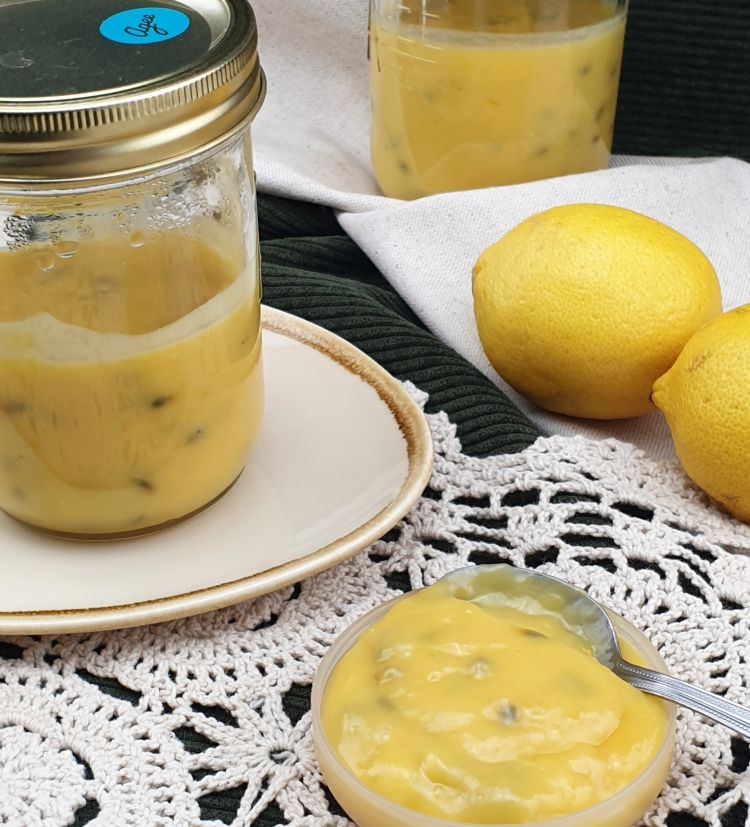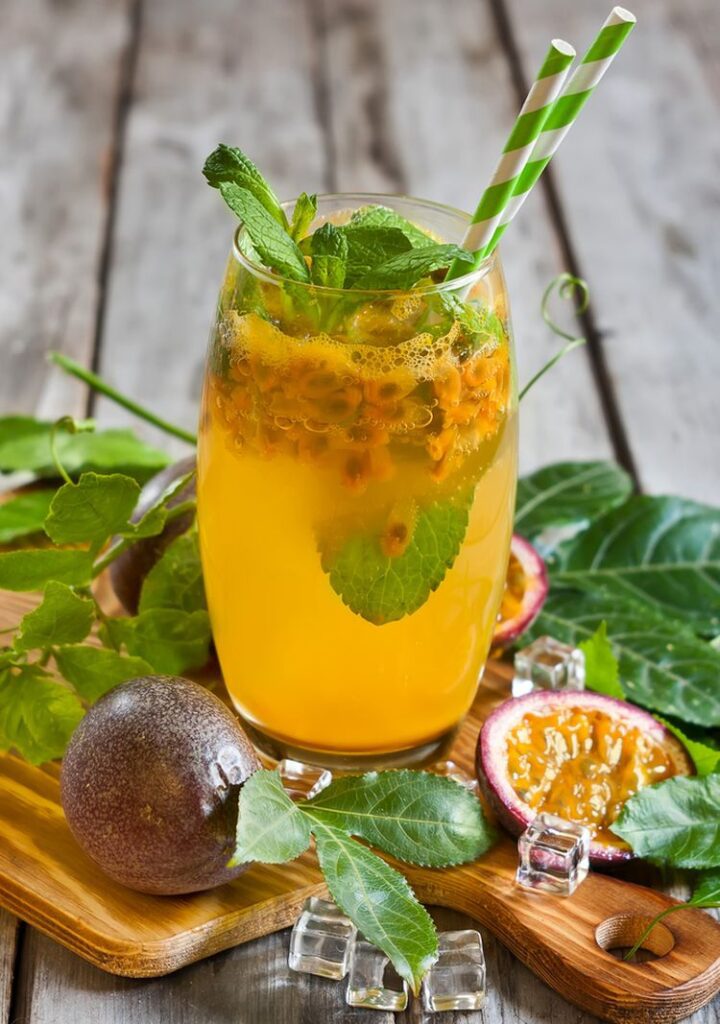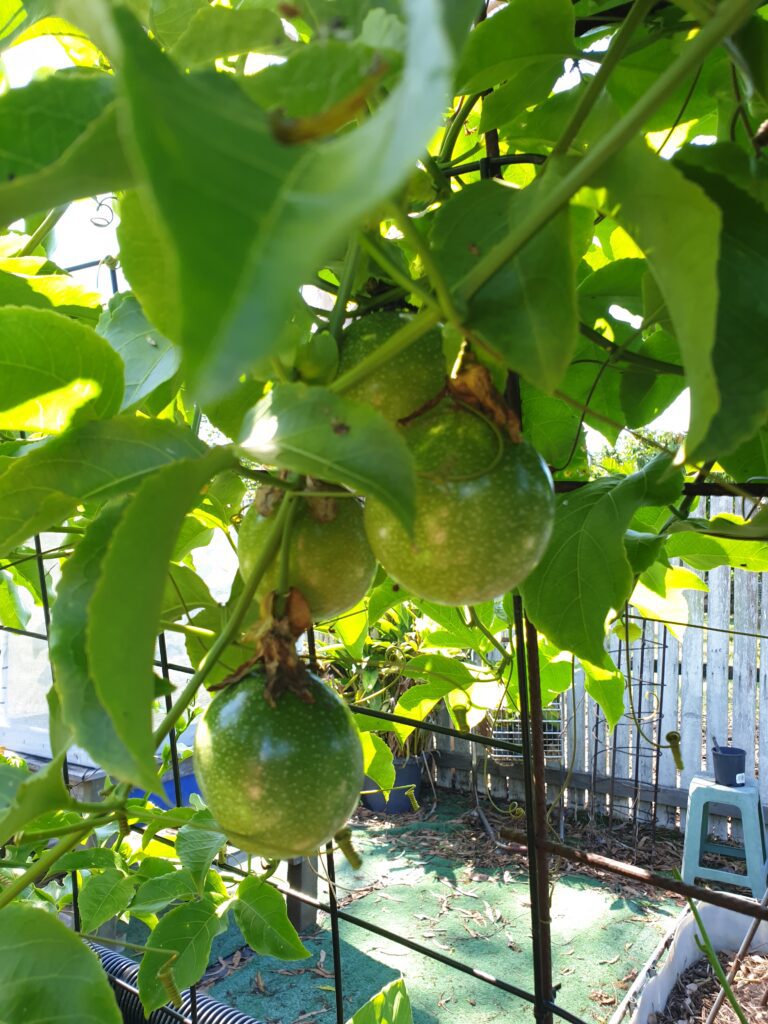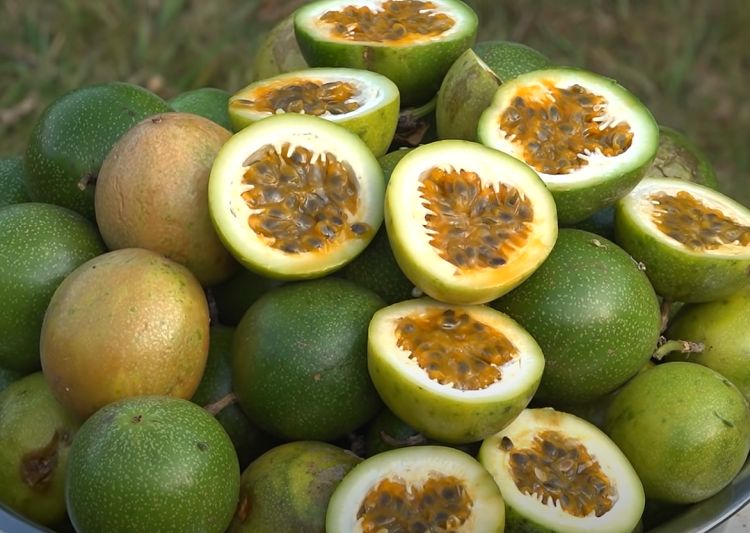It’s all very fun to grow a ton of food…until you don’t know what to do with it all. Produce gluts can be difficult, if not impossible, to avoid when you have fruit trees. There’s nothing a food gardener likes more than a big harvest, but it can be overwhelming when it comes all at once. And with fruit trees, unlike vegetables, we can’t succession-plant in order to space out a harvest. We have to learn how to make use of what we grow, especially when it all comes at once. Here, we look at how to use lots of passionfruit.
Save for Later
Passionfruit pulp freezes and defrosts well, so you can easily save it for later in the freezer. This is ideal when you’re short on time and need to process a large harvest quickly. You can freeze passionfruit into any shape or size you like. Ice cube trays work well, as obviously they create small portions which are convenient when you just need a little bit for a drink or similar. Otherwise, freeze passionfruit pulp in sandwich bags laid flat. Remember to always label and date the bags as you go.
Passionfruit pulp defrosts quickly, so frozen passionfruit is easy to use when you need some to top a pavlova or cake, or just need a little bit to make icing or add into a smoothie or drink.

Spreads
Simply put, this is a big one, as there are a ton of spreads you can make with passionfruit. We favour our lemon and passionfruit butter, (shown above), a traditional classic that everyone loves. Passion fruit butter is also known as passion fruit curd; the names are interchangeable. Much like a jam but with dairy, this is essentially a tangy spread made with fresh fruit, butter, sugar and eggs.
Then there’s jam, where you can combine passion fruit with a variety of other flavours, such as pineapple, orange, and even tomatoes. Even the outer shell of passionfruit can be used to make jam. Here’s one recipe, but be warned that it is on the bitter side of the taste scale!

Drinks
Naturally, passionfruit pulp can be added to drinks like fruit juice, water, lemonade and mixed fruit smoothies. A huge variety of cocktails and mocktails can include some passionfruit- a quick google for recipes will yield a myriad of results.
Perhaps less obviously, it can be used to enhance kombucha and kefir water. In case you don’t know, kombucha is a fermented drink made with tea, sugar, bacteria and yeast. To make the drink, bacteria and yeast must first grow together to form a culture, which is then added to the sugar and tea. The mixture is then allowed to ferment until it is ready to drink.
Passionfruit cordial is quite easy to make, and will use up quite a few fruit. Aside from the passionfruit, the only ingredients required are sugar, water, and a lemon.

Desserts
Passionfruit lends itself to a wide variety of desserts, as it is both tasty and colourful. It’s an old saying that we eat with our eyes, and fruit that adds visual interest is always a winner. Australian dessert classics that we all know are fruit salad and pavlova topped with passionfruit, but there is so much more you can do with this tropical summer fruit.
Think mousse, tart, slice, self-saucing pudding, white chocolate truffles, muffins, melting moments, cupcakes, iceblocks, creme brulee, sponge cake and cheesecake. You can find some of those recipes here. Ice creams and sorbets are fairly quick to whip up, and can definitely be done without an ice cream maker.
Food
There’s more to passionfruit than just sweets and drinks. In fact, passionfruit is a very versatile fruit than can also be used in a range of savoury dishes and condiments. Salsas, chilli sauces and marinades are an obvious place to start, but consider cold passionfruit soup, salmon with passionfruit glaze, prawns with passionfruit, and passionfruit in pulled pork tacos. You can find some of these recipes here.

Share, Swap, Sell
While of course you can share your excess passion fruit with friends and family, you might want to take it a step further if you have many kilos in excess. Facebook marketplace is the current go-to for community exchanges, making simple local transactions quick & easy. Here, you’ll likely be able to give away or sell your passion fruit at a price of your choosing.
Should you have one or more nearby, local foodbanks or community organisations that help the needy with free food may welcome a donation of fresh fruit. These volunteer-run charity groups exist worldwide, so there’s likely to be one near you if you’re in an urban area.
Local plant-swapping groups usually hold in-person swap meetups, where you can exchange excess produce and plants with like-minded gardeners. Swaps have a multitude of benefits- not only are they cash-free, but I always find myself coming home with goodies I never knew I wanted! If you’re in seQLD, there are swaps at Jimboomba, Ipswich and Mt. Crosby, just to name a few.


















